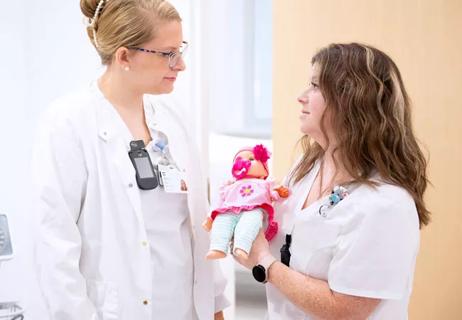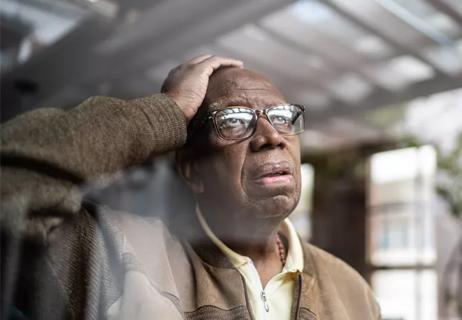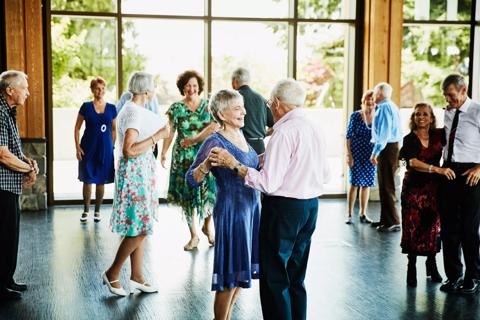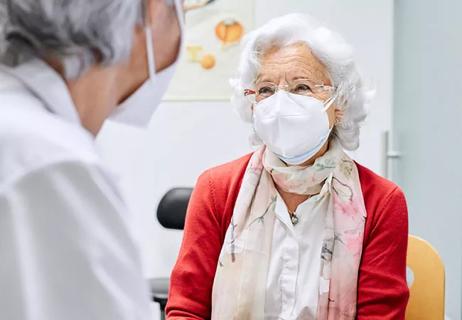Additional finding of left atrial enlargement may merit further study

There’s new evidence that participation in endurance exercise benefits the hearts of older adults, but the positive effects may potentially come with a modest downside risk in the form of left atrial enlargement.
Advertisement
Cleveland Clinic is a non-profit academic medical center. Advertising on our site helps support our mission. We do not endorse non-Cleveland Clinic products or services. Policy
Those are key takeaways from an echocardiography study of ventricular function in senior athletes led by Cleveland Clinic cardiologist Chete Eze-Nliam, MD, MPH, who presented the findings at the American Society of Echocardiography’s 2019 scientific sessions on June 23.
The researchers noted that regular and intensive exercise has been recognized to improve cardiac performance by impacting both left ventricular (LV) and right ventricular (RV) morphology as a response to volume and pressure stimulation. “It is unclear, however, whether the ventricles’ physiologic adaptations to exercise are associated with deleterious modifications in diastology and ventricular function in older populations,” Dr. Eze-Nliam explains. “That’s what we set out to analyze.”
She led a team of researchers in evaluating ventricular function among 178 participants at a recent World Senior Games in St. George, Utah. Subjects were 50 years of age or older (mean, 68 ± 8) without coronary artery disease, atrial fibrillation, valvular heart disease or uncontrolled hypertension. All underwent echocardiography and were assessed for the intensity level of their exercise.
When the study sample (48% male, 52% female) was categorized into low-, moderate- and high-intensity exercise levels, the following relative findings were observed:
Advertisement
Dr. Eze-Nliam says these results show that LV diastolic filling not only is preserved but may even be enhanced in senior athletes. “We found that high-intensity exercise preserved the heart’s filling function in seniors more so than moderate- or low-intensity exercise did,” she notes.
She adds that the effect was probably most pronounced in those who undertook high-intensity exercise more than three times a week for 20 or more years, although this trend did not reach statistical significance, likely because of the relatively small sample size of this subgroup.
“Notably, there was no deleterious effect of high-intensity exercise on pumping function of the heart in these older adults,” she observes.
At the same time, she notes, the analysis revealed greater dilatation of the left atrium among seniors in the high-intensity exercise group. “Given the relationship between long-term endurance sports and the incidence of arrhythmias, further study is needed to fully understand the implications of this finding,” she says.
Her colleague, Cleveland Clinic electrophysiologist Mohamed Kanj, MD, who was not involved in this analysis, notes that the latter finding shouldn’t prompt too much concern. “Like most risk modifiers, exercise exhibits a J-curve phenomenon,” he says. “While the incidence of atrial fibrillation is increased among elite endurance athletes, many studies have demonstrated a significant reduction in atrial fibrillation burden with routine exercise.
“I advise not to be too concerned about the left atrial enlargement seen with high-intensity exercise and its potential effect on the risk of future atrial fibrillation,” Dr. Kanj continues. “This potential risk may be offset by the many beneficial effects seen with exercise, such as lower blood pressure, weight loss, improved glucose control and improved diastolic function, all of which may reduce the incidence of atrial fibrillation.”
Advertisement
Advertisement

Pilot study confirms feasibility of conducting additional research on the novel treatment

Longer hospitalization does not mean a safer, faster recovery for patients age 70+

Structured data helps identify older adults at risk for poor outcomes, defines patients who require more comprehensive assessments

Self-administered tool can be completed in 10 minutes in waiting room

Social prescribing turns leisure activities into good “medicine”

A large geriatric study aims to find the answers

Analysis underscores how telehealth can help pinpoint elder abuse